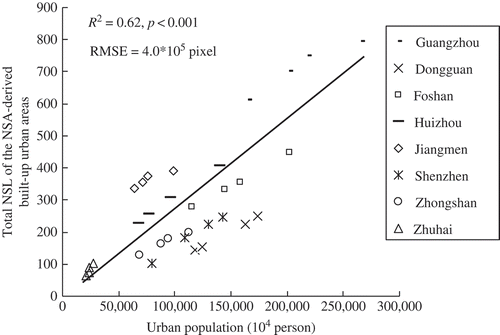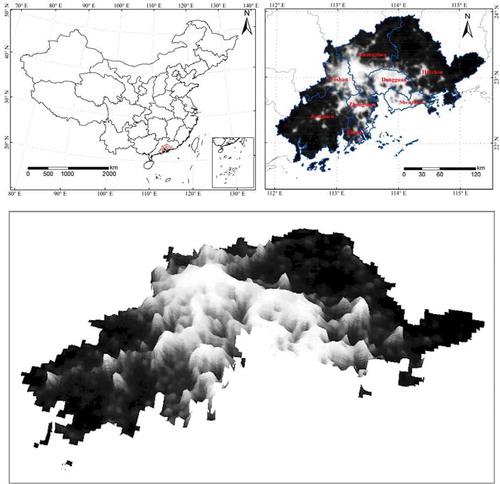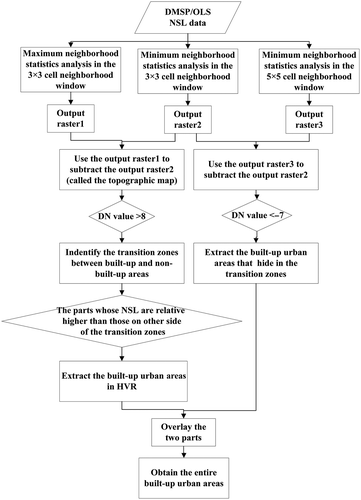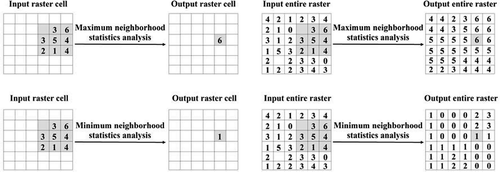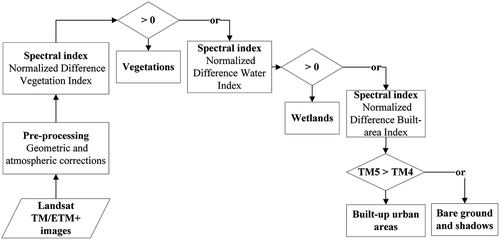Figures & data
Table 1. Landsat TM/ETM+ images of eight cities in the Pearl River Delta.
Figure 3. Deriving the topographic maps using the neighborhood statistics analysis method. Figure ‘a’–‘d’ shows the original DMSP/OLS imageries of the city of Guangzhou in 1996, 2000, 2005, and 2009, respectively; Figure ‘e’–‘h’ shows the corresponding topographic maps.
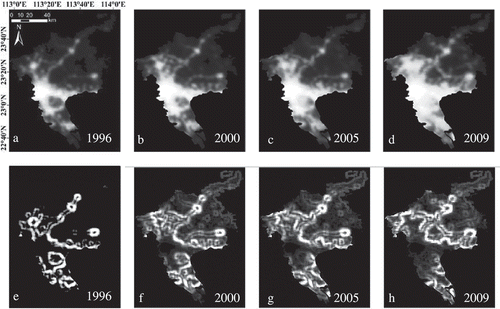
Figure 4. Extracting the built-up urban areas in HVR. Figure ‘a’–‘d’ represents the three classified areas (transition zones (TZ); built-up urban lands (BL); and non-built-up urban lands (NBL)) in 1996, 2000, 2005, and 2009, respectively; Figure ‘e’–‘h’ represents the extracted built-up areas in HVR.
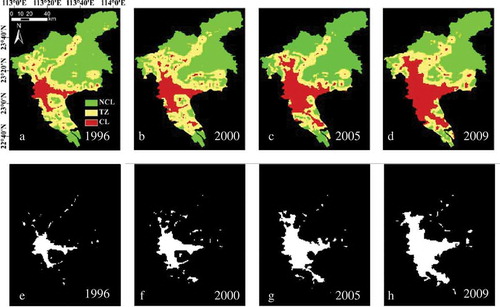
Figure 5. Extracting the built-up urban areas hidden in the transition zones. Figure ‘a’–‘d’ represents subtracted results that are derived by subtracting the output raster of minimum-NSA in the 5 × 5 cell window from that in the 3 × 3 cell window in 1996, 2000, 2005, and 2009, respectively; Figure ‘e’–‘h’ represents the extracted built-up urban areas in the transition zones.
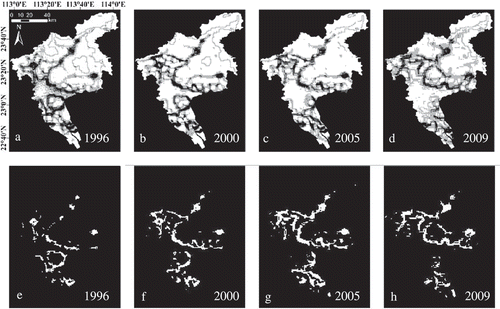
Figure 6. The entire built-up urban areas of Guangzhou extracted from NSL in 1996, 2000, 2005, and 2009.

Figure 7. The built-up urban areas of eight cities in the Pearl River Delta of southern China in 1996, 2000, 2005, and 2009. Figure ‘a’–‘d’ represents the original DMSP/OLS NSL imageries; Figure ‘e’–‘h’ represents the Landsat TM/ETM+-extracted built-up urban areas; Figure ‘i’–‘l’ represents the NSL-extracted built-up urban areas using the global-fixed threshold method; Figure ‘m’–‘p’ represents the NSL-extracted built-up urban areas using the local-optimized threshold method; Figure ‘q’–‘t’ represents the NSL-extracted built-up urban areas using the proposed NSA method.
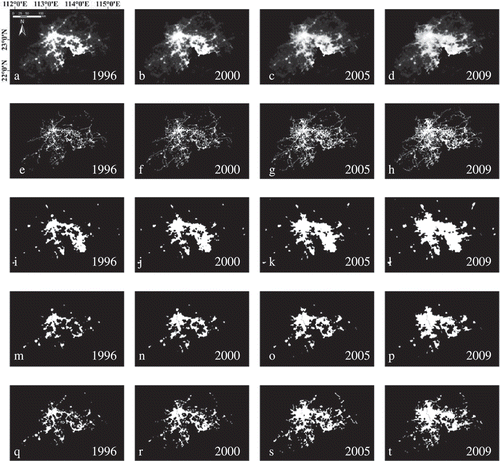
Table 2. Validation accuracies of DMSP/OLS NSL-extracted built-up urban areas using the confusion matrix method in Matab.
Table 3. Definition of the landscape indices.
Table 4. Comparison of the landscape indices between DMSP/OLS NSL-mapped built-up urban areas with those from Landsat TM/ETM+ imageries.
Figure 8. Comparison of the landscape indices of DMSP/OLS NSA-derived built-up urban areas with those of Landsat TM/ETM+ images. (a) The total area (CA); (b) the landscape shape index (LSI); (c) the contiguity index (CONTIG); and (d) the perimeter area ratio (PARA).
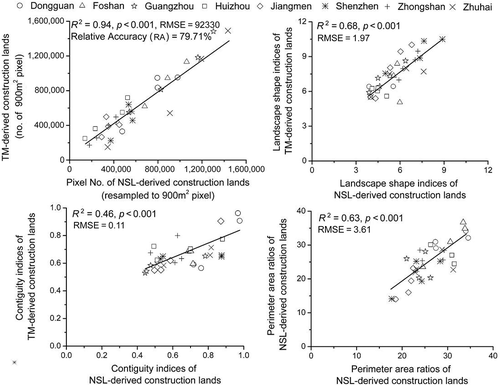
Figure 9. Scatter diagrams between the total NSL of NSA-extracted built-up urban areas and statistical urban population.
